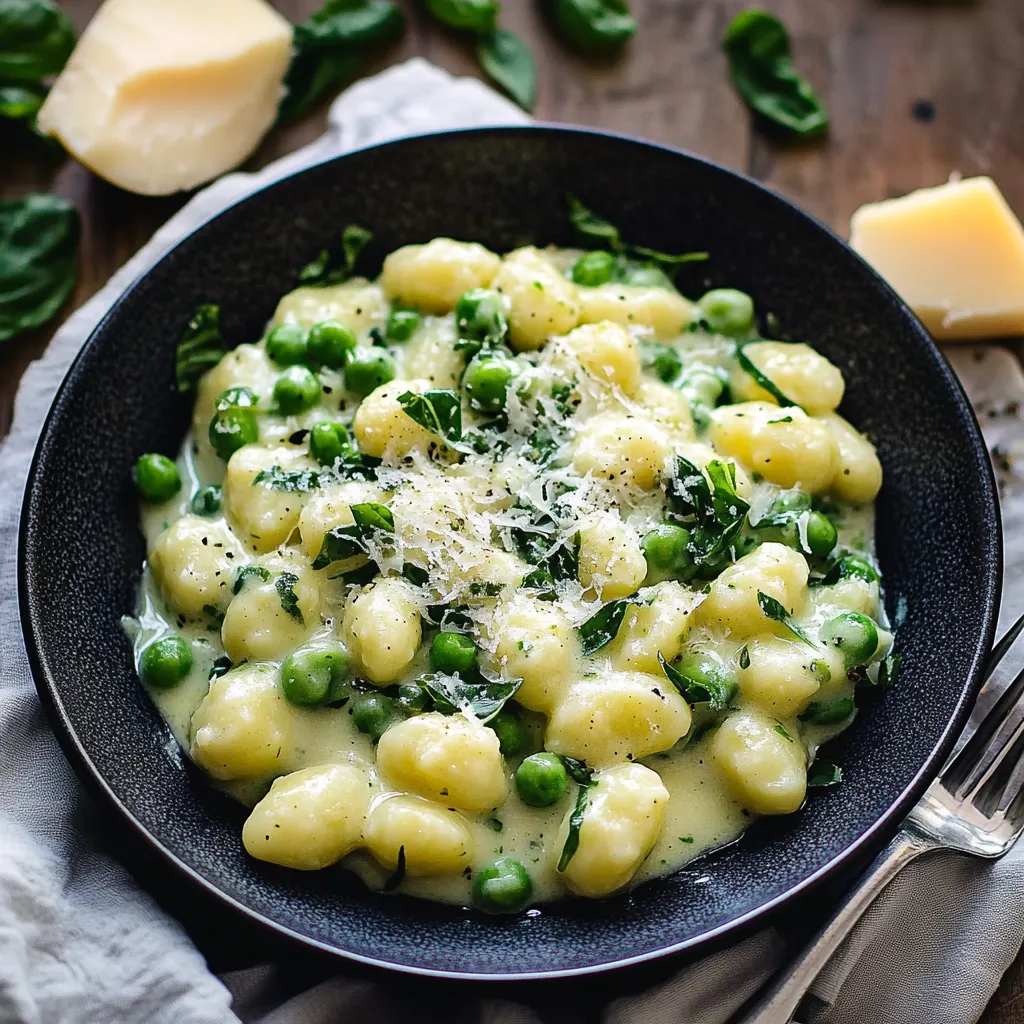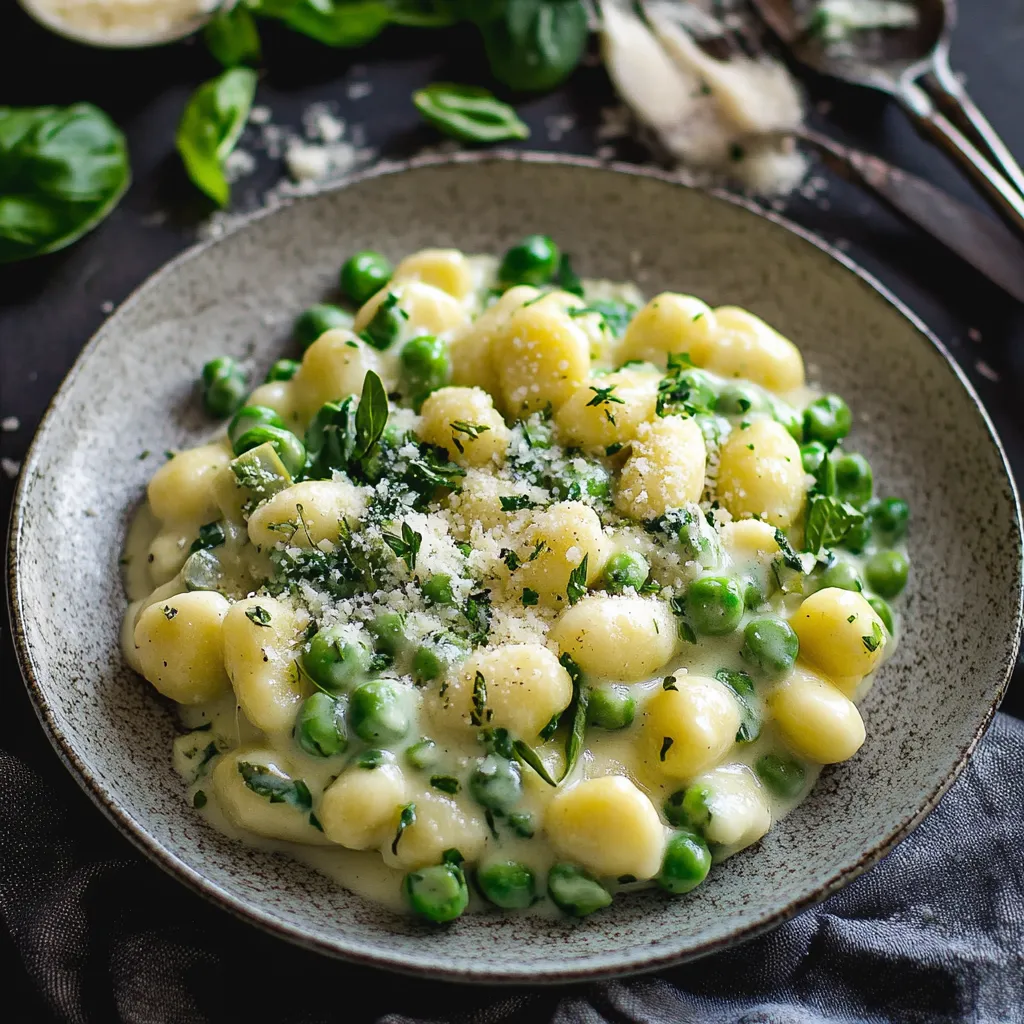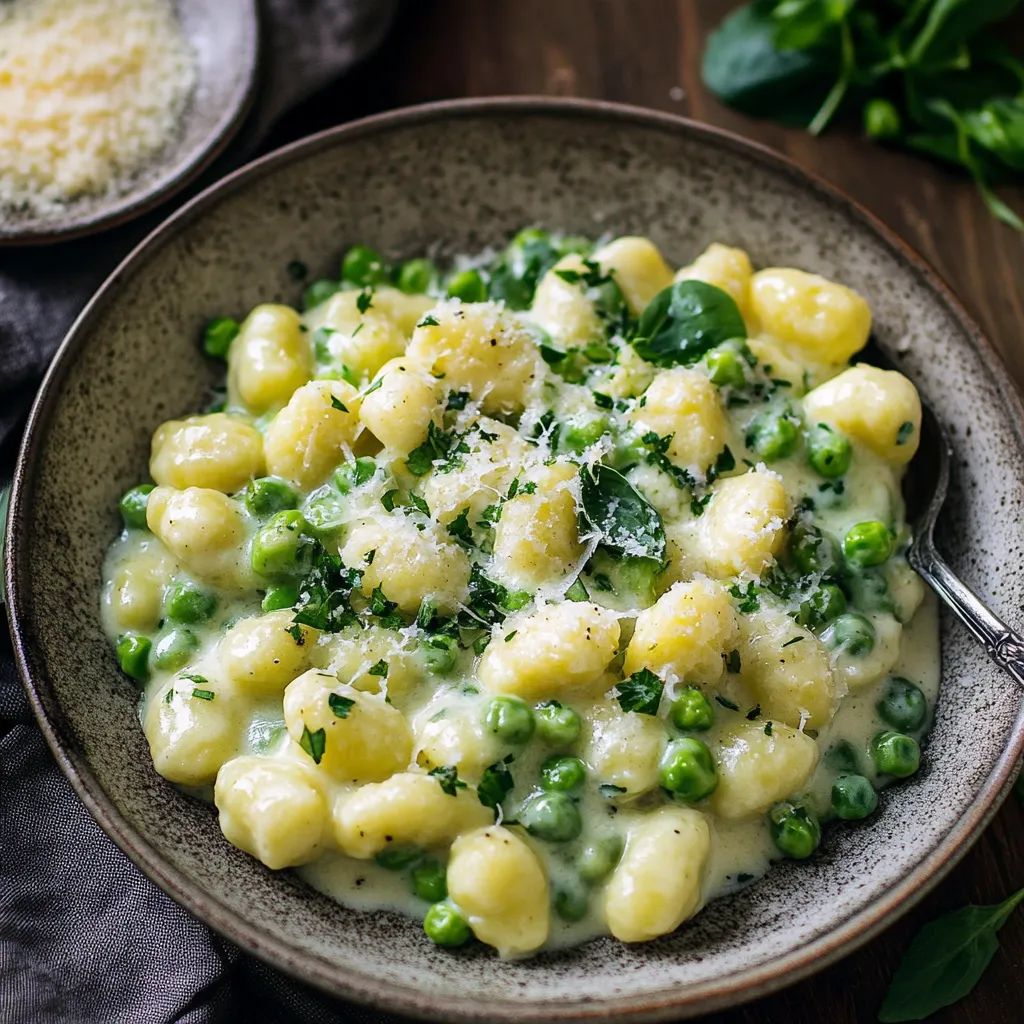 Pin it
Pin it
This gnocchi primavera celebrates spring flavors with pillowy potato dumplings tossed in a light, creamy Parmesan sauce. The vibrant vegetables add color, texture, and nutrition to this comforting Italian-inspired dish that comes together in just minutes.
I created this recipe during a busy spring evening when I needed something quick yet satisfying. It has since become my go to solution when I need to impress last minute dinner guests without spending hours in the kitchen.
Ingredients
- Potato gnocchi: Store bought saves time while providing authentic Italian texture and flavor
- Extra virgin olive oil: Use a good quality one as it forms the flavor base of your sauce
- Garlic: Fresh cloves provide aromatic depth that powdered versions simply cannot match
- Asparagus: Choose bright green stalks with tight tips for the best spring flavor
- Frozen peas: A pantry staple that adds sweetness and vibrant color year round
- Frozen chopped spinach: Packs nutritional value and beautiful green color without prep work
- Fresh chives: Their mild onion flavor brightens the creamy sauce beautifully
- Low fat milk: Creates silky sauce texture without the heaviness of cream
- Parmesan cheese: Aged varieties provide the most pronounced nutty flavor
- Lemon rind: The secret ingredient that lifts all the flavors with bright citrus notes
Step-by-Step Instructions
- Prepare Your Boiling Water:
- Fill a large pot with water and bring to a rolling boil over high heat. This will be for cooking your gnocchi later. A properly salted water is essential for flavor foundation think salty like the sea.
- Create The Flavor Base:
- Heat olive oil in a large skillet over medium high heat until it shimmers. Add your finely diced garlic and cook for exactly one minute, stirring constantly to prevent burning. The garlic should turn lightly golden and release its fragrant aroma throughout your kitchen.
- Build The Vegetable Medley:
- Add the fresh asparagus pieces first, allowing them to cook for 2 minutes until they begin to soften but maintain a slight crunch. Then incorporate the frozen peas and spinach, cooking for just 1 minute more. This sequence ensures each vegetable reaches perfect doneness without becoming mushy.
- Start The Sauce Foundation:
- Pour milk into the skillet with your vegetables, allowing it to come to a gentle simmer. The milk will pick up flavors from the garlic and vegetables while beginning to reduce slightly. Remove from heat temporarily while you cook the gnocchi.
- Cook The Gnocchi:
- Add gnocchi to your boiling water and watch carefully. When most pieces float to the surface, cook for just 2 to 3 minutes more. Perfectly cooked gnocchi should be tender but still have a slight bite. Use a slotted spoon to transfer directly to your sauce, bringing along a small amount of the starchy cooking water.
- Create The Silky Sauce:
- Return the skillet to low heat. Add the grated lemon rind and stir to distribute throughout. Sprinkle the Parmesan cheese over the gnocchi and vegetable mixture, stirring gently but constantly for 2 to 3 minutes. The cheese will melt into the milk, creating a velvety sauce that clings beautifully to each gnocchi.
 Pin it
Pin it
The lemon rind is truly the magical ingredient in this recipe. I discovered its power accidentally when I had no fresh herbs on hand and needed something to brighten the dish. Just that tiny amount transforms the entire flavor profile, cutting through the richness of the cheese with a subtle citrus note.
Storage and Reheating
This gnocchi primavera keeps well in an airtight container in the refrigerator for up to two days. The sauce will thicken considerably when chilled. To reheat, add a splash of milk or water and warm gently over medium low heat, stirring frequently to restore the creamy texture. Avoid microwave reheating if possible as it can make the gnocchi tough.
Seasonal Variations
Spring brings tender asparagus and fresh peas which are ideal in this dish. During summer, substitute diced zucchini and cherry tomatoes. Fall calls for butternut squash cubes and sage instead of chives. Winter versions work beautifully with broccoli florets and sun dried tomatoes. The versatile Parmesan sauce complements any seasonal vegetable combination you choose.
Serving Suggestions
This gnocchi primavera stands perfectly on its own as a complete meal, but pairs wonderfully with a simple arugula salad dressed with lemon and olive oil. For a more substantial dinner, serve alongside herb crusted chicken breasts or grilled salmon. A glass of crisp Pinot Grigio or unoaked Chardonnay makes the perfect beverage pairing to complement the creamy notes.
 Pin it
Pin it
This dish is a vibrant celebration of spring that quickly becomes a family favorite with every serving.
Frequently Asked Questions
- → Can I use homemade gnocchi instead of store-bought?
Absolutely! Homemade gnocchi works beautifully in this dish and will elevate the flavors even further. Just ensure they're cooked until they float to the surface, which typically indicates they're done.
- → What vegetables can I substitute if asparagus isn't in season?
This dish is very adaptable! Try broccoli, zucchini, cherry tomatoes, or bell peppers. Any quick-cooking vegetable that pairs well with parmesan will work nicely.
- → Can I make this dairy-free?
Yes, substitute the milk with unsweetened almond or oat milk and use a dairy-free parmesan alternative. The texture will be slightly different, but still delicious.
- → How do I know when the gnocchi is properly cooked?
Gnocchi is done when it floats to the surface of the boiling water. After they float, cook for another 2-3 minutes as directed in the recipe to ensure they're fully cooked through.
- → Can I make this dish ahead of time?
This dish is best enjoyed immediately after cooking when the sauce is creamy and the gnocchi is tender. If you need to prepare components ahead, cook the vegetables and make the sauce, then reheat gently and cook the gnocchi fresh before combining.
- → What's the best way to reheat leftovers?
Gently reheat leftovers in a skillet over medium-low heat. Add a splash of milk or water to revive the sauce if it has thickened too much during storage.
